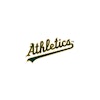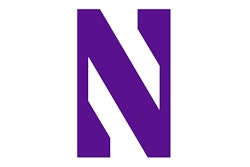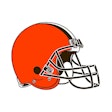Copyright 2017 South Bend Tribune Corporation
All Rights Reserved
South Bend Tribune (Indiana)
From inside it looks utterly familiar, but also strangely dreamlike.
Three tall buildings loom beyond the walls of Notre Dame Stadium. The classic bowl itself looks much as it has in recent years, minus the traditional redwood benches.
Those wooden benches have all been replaced with steel benches covered in blue vinyl.
There's premium seating, a 96-by-54 foot video screen on the south wall, ribbon video boards, enhanced Wi-Fi service, a new narrow tunnel for the visiting team and living "green" roofs.
This is not your grandfather's Notre Dame Stadium.
That much was evident Friday during a tour for news media of the $400 million Campus Crossroads project that added three buildings to the exterior of the 87-year-old football stadium, as well as premium fan seating atop those buildings.
And the university plans to host other events -- such as concerts and professional sports teams -- in the stadium, and will make the hospitality spaces available for lease for large functions. Notre Dame Stadium and its adjacent buildings won't be a community focus just six or seven weekends a year.
Fan experience
Beside the switch to steel benches, the chair-back gold seats near the field have been replaced with new navy blue ones. The flagpole, long at the northeast corner of the field, now stands at the southeast corner. A small tunnel for the visiting team to enter and exit the field is in that northeast corner, with the large north tunnel now reserved only for use by the Fighting Irish.
The Notre Dame Marching Band will no longer be seated in the northeast corner. The 400 band members will sit in the stands in the north end zone, next to the regular student section.
The wood from the old benches has been reclaimed for decorative uses in the concourses and in the three new buildings.
Although not evident to the naked eye, the cramped bench seating in the lower bowl has been renumbered, adding an average width of two inches of space for each fan, according to university officials. Fans will have to judge that new spaciousness for themselves when the 2017 season opens on Sept. 2.
Prior to this project, Notre Dame Stadium's official capacity was 80,795.
About 3,000 premium seats have been added. But with all field seats removed and lower bowl seats widened, the overall seating capacity will decrease to between 78,000 and 79,000 seats. The university hasn't yet announced the new official seating capacity.
The old scoreboard on the north end of the stadium has been removed to provide a better view of the "Touchdown Jesus" mural on the front of Hesburgh Library. Ribbon video boards have been installed along the east and west sides inside the stadium.
In the north tunnel, new banners have been hung representing each of Notre Dame's 11 national championship football titles. And words from a famous pep speech by legendary Irish coach Knute Rockne are now on display in that tunnel. (It's the speech that includes the lines: "We're gonna get 'em on the run. We're going to go! Go! Go!")
There's a "Play Like a Champion Today" sign for students to slap as they enter the student section, a reproduction of the famous sign in the Fighting Irish locker room.
New stadium lights and a new press box (on the east side of the stadium) were in use for the 2016 season.
For fan safety, hand railings have been added in the aisles in the lower bowl. And some of those railings include decorative panels that conceal wifi antennas. Wifi service is now available throughout the stadium and a new dedicated cellular network will provide significantly improved cell service in the facility, university officials said.
The concourses include new art deco-style light figures, brick-faced columns and 150 large-screen TVs. Images of classic Notre Dame football game program covers mark each seating section and reproductions of vintage game tickets add more artistic flair.
Premium seats
There are two levels of premium seating.
The loge level has semi-private seating areas with rolling back chairs, tables and personal tablets for every two seats. That outdoor seating include access to an indoor club space, food and beverages, in-seat wait service, reserved parking and other amenities. All loge seats are now sold out, according to Notre Dame.
Club level seats offer outdoor seating with a heated overhang, cushioned seats, access to an indoor club space, and food and beverages. More than 98 percent of club seating is now sold, with just a few dozen seats remaining, said John Heisler, a senior associate athletics director. (For more information about premium seating, call 574-631-3500.)
Some of the premium seats have access to adjacent terraces with additional seating and panoramic views of the football field and the campus. The club seating on the west side of the stadium allows patrons access to a 500-seat ballroom inside the new student center. Except for football games, the ballroom will be used mainly for student dances and other activities, and will be available for lease for private events.
There are four corporate box suites on the stadium's west side that are leased out for individual games.
Three new buildings
The Campus Crossroads project includes three new buildings: nine-story Duncan Student Center, a study, fitness, career counseling and student activities building on the west side of the stadium; nine-story Corbett Family Hall, an anthropology, psychology and digital media building on the east side; and O'Neill Hall, a six-story music building on the south side.
The top three floors of Duncan Student Center will open in September, with the lower floors (featuring the student center, fitness facility, career counseling and three restaurants) slated to open in January 2018.
The new two-story student/employee fitness center in Duncan will triple the space currently available in Rolfs Sports Recreation Center. Rolfs will be converted to a practice facility for the Notre Dame men's and women's basketball teams, and wooden basketball floors will be added in the north dome of the Joyce Center to provide additional space for basketball practice.
The media center and anthropology department will move into Corbett by January, with the psychology department scheduled to move in next summer. The music building is scheduled to be fully occupied by January.
O'Neill Hall, the south building, will house a private club/lounge on its fourth floor. It's called the South Club, and it will include Harper's Bar (named after Jesse Harper, Notre Dame football coach from 1913 to 1917). The club will be available for lease for private events at other times.
The three buildings have "green" roofs: 43,000 square feet of roof space covered with living plants as a commitment to sustainability. LEED Silver certification will be sought for all three buildings.
Duncan and Corbett, at 137 feet in height, now hold the distinction of a tie for fourth tallest structures on campus. (Tallest is the spire of Sacred Heart Basilica, at 230 feet, followed by Hesburgh Library, 210 feet, then the top of the Golden Dome on the Main Building, 187 feet.)
A driving ramp leading underground has been built southwest of the stadium complex. That drive leads to underground loading docks and a commercial kitchen/catering service for the three buildings and the stadium.
To run the new buildings on football weekends and through the year, Notre Dame is adding more than 60 full-time positions and about 765 part-time or on-call seasonal jobs.
Construction work continues in the three Campus Crossroads buildings. University officials say the football stadium itself will be ready when fans arrive for the Sept. 2 first home game, which features the Fighting Irish vs. the Temple Owls.
574-235-639
@mfosmoe
Stadium project open to the public for events Aug. 20 and 25
Notre Dame Stadium and three new adjacent buildings will be open to the public Aug. 20 as part of the university's Kicks & Flicks Week.
There will be a free "New & Gold Game" scrimmage starting at 3:30 p.m. Aug 20. And at 7:30 p.m. Aug. 25, the stadium will be open for a free public screening of the film "Rudy" on the new video board on the stadium's south end.
Tours of the new Duncan Student Center, Corbett Family Hall and O'Neill Hall will be available from 2 to 6 p.m. Aug. 20. In addition to the new buildings and video board, visitors will get a chance to see upgraded seating in the stadium, improved restrooms and the addition of close to 150 TVs along the stadium's concourses.
The first Fighting Irish home football game is scheduled for Sept. 2 against Temple.
Then to now
Key moments in the history of Notre Dame Stadium:
* 1930 -- Notre Dame Stadium opens, with seating for about 55,000 people and modeled, on a smaller scale, after the University of Michigan Stadium. The first game, on Oct. 4, is a 20-14 Irish win over Southern Methodist. Home games were previously at Cartier Field, with seating for 30,000.
* Nov. 8, 1952 -- First televised game in the stadium. Irish beat Oklahoma, 27-21.
* Oct. 27, 1956 -- A record 60,128 spectators squeezed in to watch the ND vs. Oklahoma game. Oklahoma won, 40-0.
* Oct 6, 1962 -- Largest crowd prior to stadium expansion, with a total of 61,296 people watching the 24-6 loss to Purdue.
* Nov. 22, 1973 -- Played on Thanksgiving day, this was the last home game that was not sold out, according to the university. Irish beat Air Force, 48-15.
* Sept. 18, 1982 -- First night game played in the stadium, under portable lights. Irish beat Michigan, 23-17.
* May 1994 -- University officials announce Notre Dame Stadium will be renovated and expanded beyond its existing 59,075 seats, with the added seats in a new upper bowl.
* November 1994 through summer 1997 -- $53 million expansion project proceeds, with home games still played in the stadium.
* Sept. 6, 1997 -- Dedication game for expanded Notre Dame Stadium, now with permanent lighting. New seating capacity is 80,795. Irish defeat Georgia Tech, 17-13.
* January 2014 -- University announces $400 million Campus Crossroad project, which will add three academic buildings onto the stadium, a large video screen and premium seating.
* 2014 -- FieldTurf replaces the stadium's natural grass.
* October 2014 to August 2017 -- Campus Crossroad construction proceeds at Notre Dame Stadium.
* August 2017 -- Campus Crossroads is largely completed. With each bench seat expanded in the lower bowl by about 2 inches per person, the stadium's total capacity will decrease from 80,795 to about 78,000, including the new premium seats.
* Sept. 2, 2017 -- Scheduled first game in newly renovated Notre Dame Stadium. Fighting Irish will face the Temple Owls at 3:30 p.m.
Sources: University of Notre Dame, South Bend Tribune archives
Read More of Today's AB Headlines
Subscribe to Our Daily E-Newsletter
Terms and Conditions Privacy Policy































